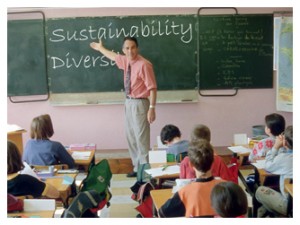Traditionally, when people are in unsatisfactory situations, or are unhappy with their lives, they turn to religion. The Communist Party flips the notion of religion as a solace on its head, and preaches that religion is what keeps the lower classes appeased and prevents them from taking down those that oppress them. In Battleship Potemkin, directed by Sergei M. Eisenstein, this Communist ideal and its merits are displayed.
The film takes place during the 1905 Revolution, in which the lower classes rallied together to fight the Czar. The most interesting thing, to me, was the portrayal/the importance of religion in the film. Before the mutiny on the ship takes place, a sailor breaks a plate that has “give us this day our daily bread” in-scripted on it. During the mutiny, a priest stands in the way of the sailors, siding with the captain and the officers. In this way, religion is shown as a proponent of the Czar and his authority. Distain for religion is a large part of Communism, which, at the time that the film was made, was the political ideology of the Russian government. The film was ostentatiously about the 1905 Revolution, but it was really a way to enforce the views of the Communist party, and reiterate the reasons why Russia turned to Communism in the first place.
Because they both morphed into authoritarian states, German Fascism and Russian Communism are often look at as similar forms of government; they are not. The film shows this when a Russian aristocrat says “Kill the Jews”, and all of the lower class people attack him for this comment. In Russia, everyone was supposed to be equal, and religion and ethnicity were things to be forgotten with the rise of Communism. In Russia, it was the rich and privileged who were hated, regardless of ethnicity and/or religion. In Germany, it was quit the opposite; the Germans wanted to racially cleanse their country. As Mazower explains in Dark Continent, “the law no longer protected the rights of jews and gypsies, as well as “degenerate” classes of Aryans” in Nazi Germany (Mazower 33).
This film illustrates why Communism was appealing to the Russian people. The brutal actions of the Czar’s regime are connected to religion, and both the regime and the church must lose their power for the people to gain theirs. Battleship Potemkin reminds the Russian people of the camaraderie they share under the rule of the Communist government.



